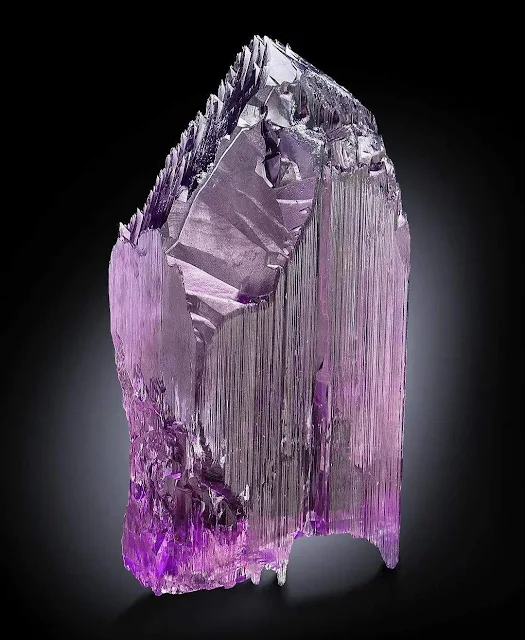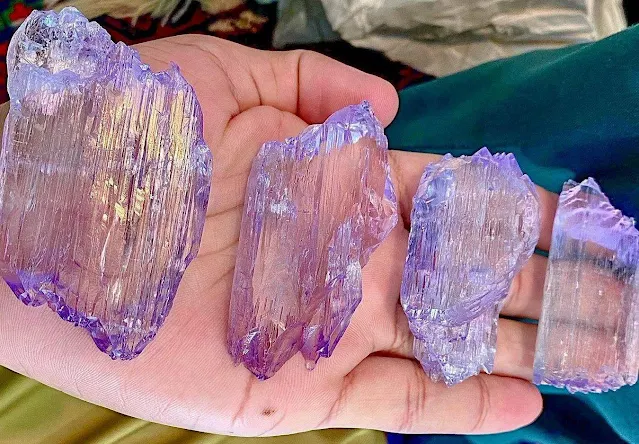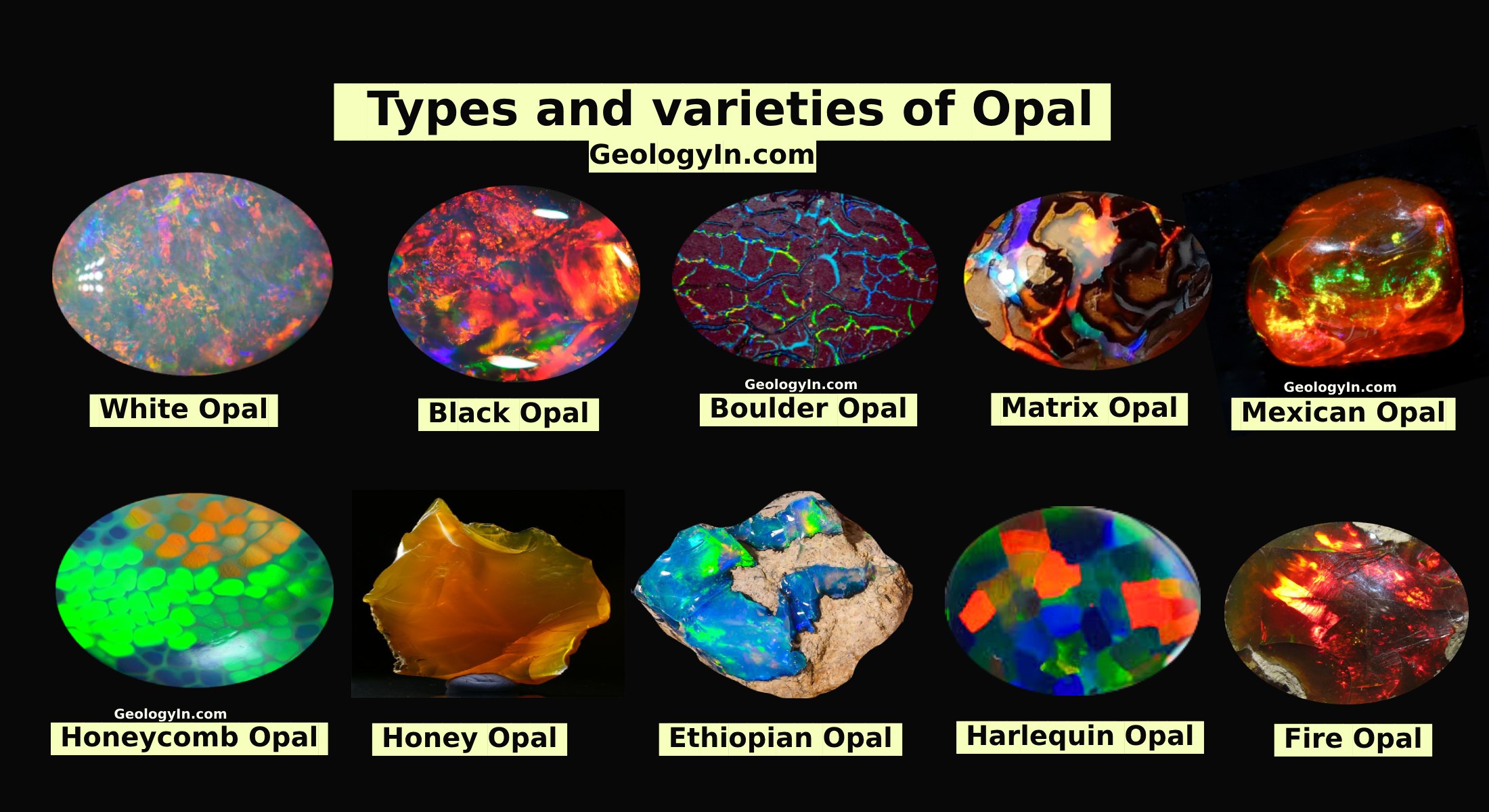Kunzite: Gemstone, Properties, Value, Uses
Kunzite is a variety of the mineral spodumene that ranges in color from pink to lilac to purple. Kunzite is a relatively rare gemstone. Kunzite is a popular gemstone for jewelry. It is often cut into cabochons or faceted stones.
It is named after George Frederick Kunz, a Tiffany & Co. gemologist who first identified the mineral in 1902. Kunzite is found in pegmatites, which are large igneous rocks that have formed from the slow cooling of molten magma. It is often found in association with other lithium-rich minerals, such as lepidolite and amblygonite.
The color of kunzite is caused by trace amounts of manganese in the crystal structure. The more manganese, the deeper the color. Kunzite can be found in a wide range of colors, from pale pink to deep purple. The most desirable colors are hot pink, lilac, and magenta.
Kunzite is found in pegmatites around the world. Some of the most notable localities include Brazil, Afghanistan, Pakistan, Madagascar, and California.
 |
| Kunzite Crystals and gems |
Spodumene
Spodumene is a mineral that belongs to the pyroxene group, and it occurs in several varieties, each with distinct color characteristics. The primary varieties of spodumene include:
Hiddenite: Hiddenite is the green variety of spodumene, named after William Earl Hidden, who first discovered it in the late 19th century in North Carolina, USA. Hiddenite's green color is attributed to the presence of chromium. It ranges from pale green to emerald green and is a valued gemstone.
Kunzite: Kunzite is the pink to lilac variety of spodumene. It was named after George Frederick Kunz, a gemologist who worked for Tiffany & Co. Kunzite's color is due to manganese impurities. It is a popular gemstone in jewelry and can exhibit delicate pastel shades.
Triphane: Triphane is the name used for the yellow to yellow-green variety of spodumene. It is sometimes considered a variety distinct from hiddenite, but both share the same mineralogical properties. Triphane's coloration is associated with iron impurities.
These spodumene varieties are valued gemstones, with hiddenite, kunzite, and triphane sought after for their unique colors and appearances.
Properties of Kunzite
Composition: Kunzite is a variety of the mineral spodumene, composed primarily of lithium, aluminum, and silicon oxides. Its chemical formula is LiAlSi₂O₆.
Color: Kunzite exhibits a delicate pink to lilac color, which is a result of trace amounts of manganese within its crystal structure.
Luster: Kunzite typically displays a vitreous to pearly luster, giving it a subtle sheen when properly polished.
Crystal System: Kunzite crystallizes in the monoclinic crystal system, forming elongated prismatic crystals with distinct vertical striations.
Streak: The streak of kunzite is usually white.
Hardness: Kunzite has a Mohs hardness of 6.5 to 7, making it moderately durable but susceptible to scratching from harder materials.
Cleavage: Kunzite exhibits distinct cleavage along two directions, parallel to the length of the crystal and perpendicular to its axis.
Crystal Form: Kunzite crystals commonly occur as long, slender prisms with flat, often striated faces.
Density: The density of kunzite ranges from approximately 3.15 to 3.23 g/cm³.
Transparency: Kunzite is typically transparent to translucent, allowing light to pass through its crystal lattice with varying degrees of clarity.
Fracture: Kunzite exhibits conchoidal to uneven fractures when broken, with smooth, curved surfaces.
Specific Gravity: The specific gravity of kunzite falls within the range of 3.10 to 3.23.
Solubility: Kunzite is insoluble in water and most common acids and bases.
Magnetism: Kunzite is non-magnetic under normal conditions.
Fluorescence: Some specimens of kunzite may exhibit weak to moderate fluorescence under ultraviolet light, typically showing a pale pink glow.
Pleochroism: Kunzite displays pleochroism, meaning it can exhibit different colors when viewed from different angles. In kunzite, this effect is usually weak, with shades ranging from pink to violet.
Refractive Index: The refractive index of kunzite falls between approximately 1.660 and 1.676, depending on the wavelength of light.
Inclusions: Kunzite may contain various types of inclusions, including mineral crystals, liquid-filled cavities (fluid inclusions), and structural defects within the crystal lattice.
 |
Kunzite crystal, showcasing its unique pink hue and crystalline structure. |
How Kunzite is Formed
Kunzite, a pink to lilac-colored variety of the mineral spodumene, forms through geological processes involving heat, pressure, and chemical reactions. It typically originates in pegmatite veins, which are coarse-grained igneous rocks formed during the crystallization of molten magma.
During the formation of pegmatites, molten rock rich in lithium and other elements cools and solidifies, creating an environment conducive to the growth of large crystals. Within these pegmatite veins, spodumene crystals, the precursor to kunzite, develop over extended periods.
The pink coloration of kunzite is attributed to trace amounts of manganese within the crystal lattice structure. Over millions of years, geological processes such as tectonic activity and weathering may expose these pegmatite deposits to the Earth's surface.
Kunzite may also undergo irradiation from natural sources such as cosmic rays, which can further enhance its coloration. The combination of geological conditions, mineral composition, and external influences contributes to the formation of kunzite, creating the beautiful gemstone sought after for its delicate hues and crystal clarity.
Kunzite, a gemstone known for its delicate pink to violet hues, can be found in various locations around the world, primarily within igneous rock formations called pegmatites. These pegmatites form from the slow cooling of molten magma and often contain pockets rich in lithium-bearing minerals, making them ideal environments for kunzite crystallization. Here are some of the key regions where kunzite is found:
 |
| Kunzite From Dara-i-Pech Pegmatites, Chapa Dara District, Kunar Province, Afghanistan. Photo Copyright ©️ Fine Art Minerals |
Where is Kunzite Found
California, USA: The Pala district in San Diego County was the first commercially significant source of kunzite, discovered in 1902. While deposits are limited, some gem-quality material is still found there.
Brazil: Currently the leading producer of kunzite, Brazil boasts several notable deposits, including Minas Gerais and Rio Grande do Norte. These regions yield kunzite in various shades, including vibrant pinks and lilacs.
Afghanistan: The Nuristan and Kunar provinces in Afghanistan are known for producing high-quality kunzite with intense pink and violet colors. However, ongoing political and security concerns can impact mining activities.
Pakistan: The Gilgit-Baltistan region in Pakistan also harbors kunzite deposits, but the quality and quantity tend to be lower compared to other sources.
Madagascar: This island nation has emerged as a significant source of kunzite in recent years, particularly from the Antsirabe and Ambositra regions. The material found here often displays pale pink to lilac hues.
It's important to note that the specific characteristics and quality of kunzite can vary depending on its location. For example, Afghan kunzite tends to be more intensely colored, while Brazilian kunzite often occurs in larger sizes.
 |
| Four (4) Natural Kunzite Crystals From Afghanistan. Photo Copyright ©️ Hamza Gems Minerals |
Kunzite Uses
Kunzite, prized for its delicate pink to lilac hues and transparent clarity, has several uses in various fields. Here are some notable applications of kunzite:
Gemstone Jewelry: The primary use of kunzite is in the creation of gemstone jewelry. Its attractive color and good transparency make it a popular choice for rings, earrings, necklaces, and bracelets. Kunzite's pastel shades are particularly favored in feminine and elegant designs.
Collectibles and Specimens: Exceptional kunzite crystals, especially those with large sizes and vibrant colors, are sought after by collectors and mineral enthusiasts. These specimens are often appreciated for their aesthetic appeal and can be displayed in collections or museums.
Lapidary Arts: Kunzite, with its moderate hardness, is suitable for lapidary work. Skilled artisans may cut and carve kunzite into various shapes, including cabochons, beads, or intricate gemstone carvings.
Metaphysical and Spiritual Practices: Some individuals believe in the
metaphysical properties of kunzite, associating it with qualities like
love, compassion, and emotional healing. It is thought to have a calming
effect and is used in spiritual practices, meditation, and crystal
healing.
Kunzite Value and Price
The value and price of kunzite are influenced by various factors, including color, clarity, carat weight, cut, and overall quality. Here are key considerations that impact kunzite's value:
Gemstone Quality:
Color: The most desirable colors are hot pink, lilac, and magenta, with strong saturation and even distribution. Paler shades or uneven color will command lower prices.
Clarity: Stones with few inclusions or blemishes are more valuable.
Cut: The cut should optimize the color, brilliance, and fire of the stone. Well-proportioned and symmetrical cuts are preferred.
Carat Weight: Larger stones generally have higher values, but size isn't everything. A smaller, high-quality stone can be more valuable than a larger one with flaws.
Price ranges:
Loose stones can range from $10-$20 per carat for lower-quality material to $500-$1,000 per carat for high-quality stones.
Finished jewelry with kunzite can range from a few hundred dollars for simpler pieces to thousands or even tens of thousands of dollars for intricate designs with high-quality stones.
 |
| Heart-Shaped Kunzite Pendant |
Kunzite Meaning
Kunzite, a pink to lilac-hued variety of spodumene, holds symbolic significance in various contexts. Named after the esteemed gemologist George Frederick Kunz, it is often associated with notions of love, emotional healing, and spiritual awakening. As a gemstone renowned for its delicate color and transparency, kunzite is believed to embody gentle, compassionate energies that promote harmony and understanding. In metaphysical practices, kunzite is thought to have a calming influence, facilitating emotional balance and alleviating stress. It is considered a symbol of divine love and is said to open and activate the heart chakra, fostering love for oneself and others. Some also associate kunzite with spiritual growth, enlightenment, and the pursuit of inner peace. Whether worn as a gemstone or utilized in meditation, kunzite is revered for its potential to enhance one's capacity for love, compassion, and emotional well-being, making it more than just a captivating gem but a source of positive energy and symbolic resonance.
Conclusion
Kunzite, from its geological genesis to its representation in the gem market and metaphysical beliefs, stands as a specimen of multifaceted significance. As a gemstone celebrated for its scientific attributes and aesthetic allure, kunzite underscores the intersection of geological processes and the intrinsic beauty they yield.
Read also:








